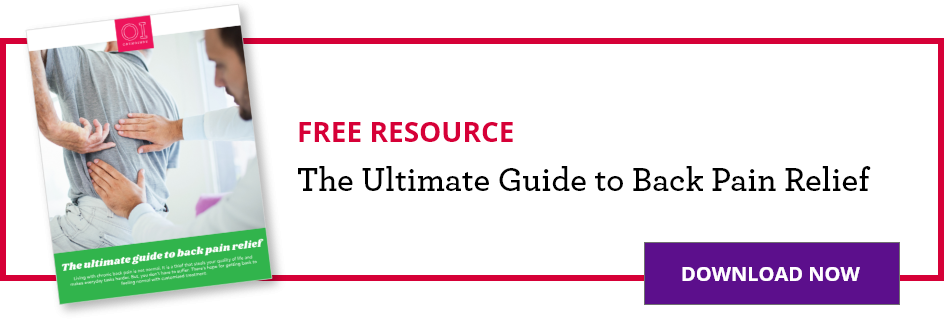THIS POST IS PART OF THE ULTIMATE GUIDE TO BACK PAIN RELIEF
A spinal fracture is a serious injury and should be treated immediately. There are three major groups a spinal fracture can fall into: flexion, extension and rotation fractures. Each represents a different movement of your spine. A rotation fracture occurs when you move or bend too far from side to side.
When your vertebrae bend or flex your neck or back too far, a flexion fracture occurs. An extension fracture occurs when you straighten from a flexed position or bend backward and a rotation fracture happens when you move or bend from side to side too far, causing your vertebrae to fracture.
MAKE AN APPOINTMENT WITH A SPINE SPECIALIST
What are the parts of your spine?
The spine is made up of 24 bones, called vertebrae, which are stacked on top of one another. These bones connect to protect the spinal cord. The seven small vertebrae that begin at the base of the skull and form the neck comprise the cervical spine.
Your spinal cord and nerves travel through the spinal canal carrying messages between your brain and muscles. The intervertebral discs between your vertebrae are flexible, flat and round discs and are about a half-inch thick. They act as shock absorbers when you walk or run and allow motion between the vertebrae.
What is a rotation fracture?
There are two types of rotation fractures. The first is very uncommon and is called a transverse process fracture, caused by extreme sideways bending.
The second is called a fracture dislocation and happens when a bone and its soft tissue move off the vertebra. A transverse process fracture will not usually affect your stability, but a fracture dislocation will affect stability and will require surgery.
What is the main cause of vertebral fractures?
Several factors go into what causes your rotation fracture, depending on the type of fracture.
Transverse process fracture:
- Extreme rotation
- Sideways (lateral) bending
Fracture dislocation:
- High impact trauma
- Car or motorcycle crash
- Fall from height
- Sports accident
- Gunshot wound

What does a fractured spine feel like?
The main symptom of a rotation fracture is back pain that gets worse when you move. If the spinal cord is involved, numbness, tingling or weakness may accompany the pain.
How do you know if your spine is damaged?
To determine whether you have a rotation fracture, your physician will ask you for a complete medical history, have you describe your symptoms and conduct a physical examination. An X-ray or MRI may be necessary to confirm the diagnosis and determine if there are other problems.
How do you treat a fractured back?
Treatment for rotation fractures varies, depending on the kind of fracture. If surgery is recommended, your physician wants to keep your spine from instability.
Transverse process fractures are usually treated non-surgically by bracing. Patients can gradually increase movement as they become more comfortable. Since transverse process fractures don’t create instability, surgery is not usually necessary.
Fracture dislocations are very unstable and usually require surgery.
LEARN MORE ABOUT SPINAL FUSION
Recovery from surgery is crucial to make sure your spine doesn’t fracture again. Recovery will most likely include bracing for 2 to 3 months and 3 to 6 weeks of physical therapy.
Schedule an appointment
Your well-being is important to us. Click the button below or call us to schedule an appointment with one of our orthopedic specialists. If your injury or condition is recent, you can walk right into one of our OrthoIndy Urgent Care locations for immediate care. For rehabilitation and physical therapy, no referral is needed to see one of our physical therapists.





